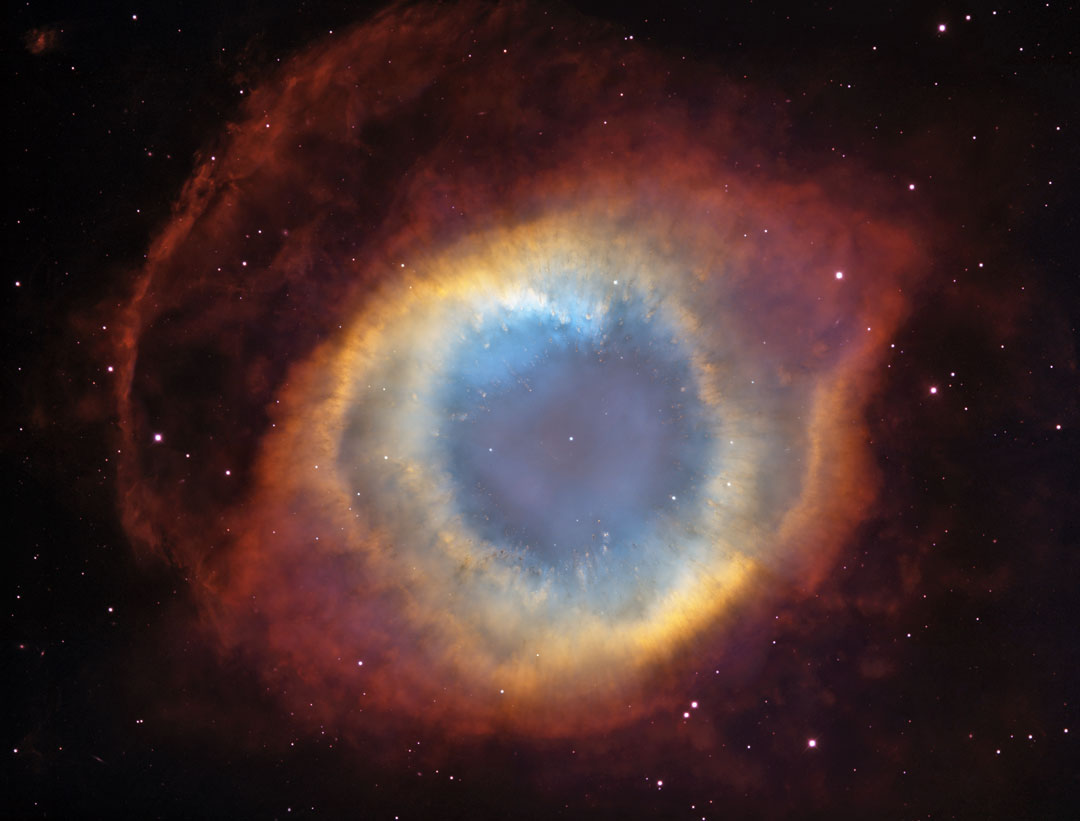2020年8月23日
The Helix Nebula from Blanco and Hubble
Image Credit: C. R. O’Dell, (Vanderbilt) et al. ESA, NOAO, NASA
Explanation: How did a star create the Helix nebula? The shapes of planetary nebula like the Helix are important because they likely hold clues to how stars like the Sun end their lives. Observations by the orbiting Hubble Space Telescope and the 4-meter Blanco Telescope in Chile, however, have shown the Helix is not really a simple helix. Rather, it incorporates two nearly perpendicular disks as well as arcs, shocks, and even features not well understood. Even so, many strikingly geometric symmetries remain. How a single Sun-like star created such beautiful yet geometric complexity is a topic of research. The Helix Nebula is the nearest planetary nebula to Earth, lies only about 700 light years away toward the constellation of Aquarius, and spans about 3 light-years.
Tomorrow’s picture: a rounder moon
布蓝柯及哈勃望远镜拍摄的螺旋星云
影像提供: C. R. O’Dell, (Vanderbilt) et al. ESA, NOAO, NASA
说明: 恒星如何产生螺旋星云呢?形似螺旋的行星状星云相当重要,因为它们可能带着像太阳这类恒星生命如何终结的线索。哈勃太空望远镜及四米布蓝柯望远镜(智利)的观测显示,螺旋星云并不是一个形状简单的螺旋,而是由两片几乎互相垂直的盘面、气弧、震波和一些成因不明的结构叠加而成。话虽如此,螺旋星云的形状还是具有许多对称性。像太阳这样简单的恒星,如何形成如此美丽但形状复杂的结构,仍然是热门的研究题材。螺旋星云位在宝瓶座方向,距离地球大约只有700光年远,大小约为3光年,是离我们最近的行星状星云。
明日的图片: a rounder moon







